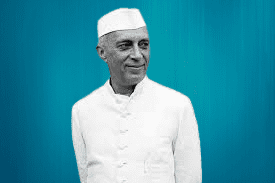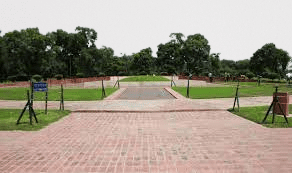Children’s Day: Every year on November 14, the birthday of India’s first Prime Minister, Pandit Jawaharlal Nehru, is commemorated as Children’s Day in India. It honors Nehru’s role in advocating for children’s education and rights. The day aims to raise awareness about the importance of children in society.

Children’s Day
Children’s Day is celebrated across India to raise awareness about the rights, education, and welfare of children. It is celebrated on 14 November every year on the birthday of the first prime minister of India Pandit Jawaharlal Nehru, who was known to have been fond of children.
Childrens Day History
On 5 November 1948, the first Childrens Day was observed as “Flower Day”. In 1954 that the day was first celebrated as “Childrens Day” on the birthday of Pandit Jawaharlal Nehru on 14th November. More than 50,000 schoolchildren attended the celebrations in National Stadium in Delhi. In 1957, 14 November was officially declared Children’s Day in India by a special government edict. This day is called as the Bal Diwas.
Pandit Nehru was affectionately called Chacha Nehru (“Uncle Nehru”) by children. As the Prime Minister, Nehru wanted to “create an atmosphere in the country where the attention is constantly focused on children and their welfare”. “Nehru saw in their innocent faces and sparkling eyes the future of India.

Once in an interview in 1958, Nehru had replied, “I have always felt that the children of today will make the India of tomorrow, and, the way we bring them up will determine the future of the country.”
Jawaharlal Nehru
Pandit Nehru, upon India’s independence in 1947, served as the country’s first prime minister for 16 years from 15 August 1947 to 27 May 1964. He was the son of Motilal Nehru, a prominent lawyer and Indian nationalist.
Personal life, education and Career
He was born on 14 November 1889 in Allahabad in British India. His father’s name was Motilal Nehru and mother’s name was Swarup Rani Thussu. Nehru had two younger sistsers named Vijaya Lakshmi and Krishna Hutheesing.
Nehru was educated in England—at Harrow School and Trinity College, Cambridge, and trained in the law at the Inner Temple, England.
He became a barrister, returned to India, enrolled at the Allahabad High Court and gradually began to take an interest in national politics, which eventually became a full-time occupation. He joined the Indian National Congress, rose to become the leader of a progressive faction during the 1920s, and eventually of the Congress, receiving the support of Mahatma Gandhi who was to designate Nehru as his political heir. As Congress president in 1929, Nehru called for complete independence from the British Raj.
Upon India’s independence on 15 August 1947, Nehru gave a critically acclaimed speech, “Tryst with Destiny”; he was sworn in as the Dominion of India’s prime minister and raised the Indian flag at the Red Fort in Delhi. On 26 January 1950, when India became a republic within the Commonwealth of Nations, Nehru became the Republic of India’s first prime minister.
Tryst with Destiny Speech by Jawaharlal Nehru
“Tryst with Destiny” was an English-language speech by Pandit Nehru, the first Prime Minister of India, to the Indian Constituent Assembly in the Parliament House, on the eve of India’s Independence, towards midnight on 14 August 1947. The speech spoke on the aspects that transcended Indian history. It is considered to be one of the greatest speeches of the 20th century and to be a landmark oration that captures the essence of the triumphant culmination of the Indian independence movement against British colonial rule in India. He declared the end of the colonial era and called on citizens to recognize the promise and opportunity of the moment:
“Long years ago, we made a tryst with destiny. Now the time has come when we shall redeem our pledge – not wholly or in full measure – but very substantially. At the stroke of the midnight hour, when the world sleeps, India will awake to life and freedom. A moment comes, but rarely in history, when we step out from the old to the new, when an age ends, and when the soul of a nation, long suppressed, finds utterance.”
His premiership, spanning 16 years and 286 days—which is, to date, the longest in India—ended with his death in 1964 from a heart attack. Hailed as the “architect of Modern India”, his birthday is celebrated as Children’s Day in India.
To date, Nehru is considered the most popular prime minister winning three consecutive elections with around 45% of the vote.
Called an “architect of Modern India”, he is widely recognized as the greatest figure of modern India after Mahatma Gandhi.
In 1955, Nehru was awarded the Bharat Ratna, India’s highest civilian honour.

He adored children, loved them and he loved roses as well. He considered every child to be the future of India thus he believed that they should be treated and educated well to help them create their own magic.
Nehru passed away in the year 1964, and in his memory, the parliament issued a resolution to establish his birthday as the official date for the Children’s Day celebration. Earlier, children’s day was celebrated in India on 20 November after the United Nations announced that day as Universal Children’s Day in the year 1954. Now, India celebrates Children’s Day on 14th November to commemorate the birth anniversary of the first Prime Minister of India.
10 Interesting Facts About Jawahar Lal Nehru
- Pandit Nehru was from a Pandit family in Kashmir. He had two sisters named Vijay Lakshmi Pandit (elder sister) and Krishna Hutheesing (younger sister).
- Pandit Nehru never received the Nobel Prize though he was nominated for the same 11 times between the years 1950 and 1955. Jawaharlal Nehru was nominated largely for his work in peace.
- Nehru Ji earned his Honors degree in Natural Science in the year 1910 after he enrolled in Trinity College in Cambridge in the year 1907.
- He returned to India in August 1912 and attempted to establish himself as a barrister by enrolling as an advocate with the Allahabad High Court.
- Nehru became the Congress President in 1929 and played a major role in the ongoing battle for independence that Congress has been leading.
- He also wrote an autobiography while incarcerated in 1935. It was named “Toward Freedom,” which was released in the United States in 1936.
- It was on 27 May 1964 when Pandit Nehru passed away after a massive heart attack and around 1.5 million people turned out to witness his cremation.
- Pandit Nehru was sent to prison nine different times during the country’s fight for independence. In total, the British imprisoned Nehru for 3259 days, which is equivalent to 9 years of his life.
- He was the first one to propose complete National Independence in the year 1927 and forego all ties binding Indians to the British Empire, including the Indian Civil Service (ICS).
- Nehru Ji also joined Annie Beasant’s 1916-founded Home Rule League out of tremendous admiration and support for the work of the activist. Pandit Nehru is also known as the “Architect of Modern India.”
Jawaharlal Nehru’s Death
Nehru had been in declining health for some time. He suffered a serious stroke in early 1964. From 23 to 26 May, he went to Dehradun for a short rest, returning to his official residence at Teen Murti Bhawan in New Delhi. He woke early the next morning and after complaining of a pain in his back, suffered a stroke at 6:25 and fell unconscious and without having regained consciousness he died at 13:44.
During the evening of 27 May, Indian Army engineers prepared a cremation ground, levelling a plot of land situated near the Yamuna River about 300 yards north of the Raj Ghat and constructing a link road from the main road leading to the area. From 18:00 that evening until the following morning, flag officers representing the Indian Armed Forces maintained a constant vigil by the body of Nehru while it lay in state, rotating every hour.
Despite it being contrary to his express wishes, Nehru was cremated by Hindu rites. The cremation took place at Shantivan. The samadi in the form of a large base covered with a lawn is located north of Raj Ghat, the Samadhi of Mahatma Gandhi on the banks of the Yamuna, witnessed by 1.5 million mourners who had flocked into the streets of Delhi and the cremation grounds
In his will, composed on 21 June 1954 and released to the public on 3 June 1964, Nehru had requested his body be cremated and his ashes scattered across India
Accordingly, on 7 June 1964, a portion of Nehru’s ashes which had been returned to Teen Murti Bhawan left the residence in a funerary urn on a ceremonial gun carriage, preceded by the three armed service chiefs in a car. The ashes were then conveyed by a special train from New Delhi to Allahabad, where they were taken in a motorcade to Anand Bhawan, the Nehru family home, for one hour.
They were then escorted by motorcade through Allahabad to the Sangam Ghat. At the ghat, the ashes were transferred to a white-painted amphibious DUKW which took the ashes to a spot in the Ganges, accompanied by two other DUKW craft carrying dignitaries, telecommunications personnel and an Indian Army brass band. The band played the hymn “Abide with Me” a moment before the urn and the ashes were immersed in the Ganges, a gun at Allahabad Fort firing a salute at the exact moment of the immersion. Two other portions of ashes were taken by government officials to the Nicobar Islands and to Port Blair; those ashes were immersed in the ocean on 8 June
Between 8:00 and 12:00 on 12 June, the major portion of the ashes were simultaneously scattered by IAF aircraft at 20 previously designated locations around the country
Shantivan, or the Forest of Peace, is the Samadhi, or cremation spot of India’s first Prime Minister, Jawaharlal Nehru. The samadi in the form of a large base covered with a lawn is located north of Raj Ghat, the Samadhi of Mahatma Gandhi.

Wish to read more interesting articles, visit read4knowledge.